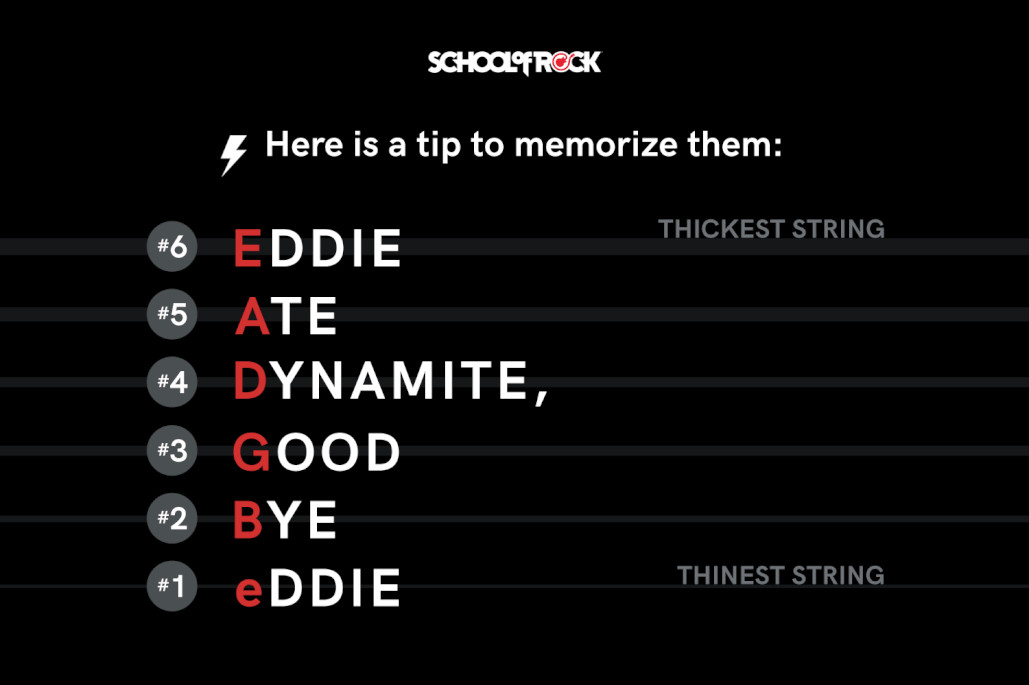Learning to tune your guitar is a foundational skill that every beginner guitarist must master. It doesn’t matter how diligently you practice your chords or scales; if your guitar isn’t in tune, it simply won’t sound right. This comprehensive guide will walk you through the process of tuning your guitar, whether you have a tuner or not. You’ll learn about Guitar Strings Notes, how to identify them, and practical tips to keep your instrument sounding its best for longer. Consistent practice is key to musical progress, and a properly tuned guitar makes every practice session significantly more enjoyable and rewarding.
Why Tuning Your Guitar Matters
Before we dive into the how-to, let’s understand the why. Imagine trying to build a house with unlevel foundations – the entire structure would be unstable and flawed. Similarly, playing the guitar without proper tuning is like building your musical foundation on shaky ground. A guitar that’s out of tune will produce dissonant chords and melodies, making it difficult to discern correct pitches and develop your ear. Tuning is not just a preliminary step; it’s an ongoing aspect of playing that ensures you’re producing the intended sounds and training your musical ear effectively.
The Basics of Guitar Tuning: Tuning Pegs and Pitch
Guitar tuning is primarily controlled by the tuning pegs located on the guitar’s headstock. These ingenious little mechanisms allow you to adjust the tension of each string, thereby altering its pitch. Turning the tuning pegs clockwise generally tightens the string, increasing the pitch, making the note sharper. Conversely, turning them counter-clockwise loosens the string, decreasing the pitch, making the note flatter. Fine adjustments to these pegs are crucial for achieving precise tuning and ensuring each of your guitar strings notes rings true.
How Often Should You Tune Your Guitar?
The golden rule for guitarists is: tune your guitar every single time you pick it up to play. Guitars are susceptible to changes in temperature, humidity, and even the simple act of playing itself, all of which can cause them to drift out of tune. Even if you’ve just tuned your guitar, vigorous playing, especially string bending or playing for extended periods, can gradually pull it out of tune.
It’s a good habit to periodically check your guitar tuning while you play. If you’re playing a chord progression and something sounds off, even if your finger placement is correct, chances are your guitar has gone out of tune. Regular tuning becomes second nature and is a hallmark of a conscientious guitarist.
 Close-up of guitar headstock showing tuning pegs, essential for adjusting guitar strings notes and tuning.
Close-up of guitar headstock showing tuning pegs, essential for adjusting guitar strings notes and tuning.
Methods for Tuning Your Guitar: With and Without a Tuner
Modern technology has made guitar tuning incredibly accessible and straightforward with electronic tuners. However, developing the ability to tune by ear is a valuable skill that enhances your musicality and understanding of pitch. Let’s explore both methods.
Tuning with a Chromatic or Pitch Tuner: Accuracy and Convenience
Electronic tuners, particularly clip-on chromatic tuners, have revolutionized the tuning process. Unlike older tuners that required plugging in your electric guitar, clip-on tuners attach directly to your guitar’s headstock. They utilize vibration sensors to detect the pitch of each string as you play a note. The tuner’s display clearly indicates whether the string is flat (too low), sharp (too high), or perfectly in tune.
These tuners work equally well for acoustic and electric guitars, offering a quick, accurate, and affordable tuning solution. Many beginner guitar amplifiers also come equipped with built-in tuners, further simplifying the process. Tuner apps for smartphones are also readily available, often for free. These apps use your device’s microphone to analyze the pitch of your guitar strings notes, providing a visual guide as you adjust your tuning pegs.
Tuning Your Guitar Without a Tuner: Developing Your Ear
While electronic tuners are incredibly convenient, learning to tune your guitar without one, often referred to as “tuning by ear,” is a rewarding skill. It relies on using a reference pitch – a known, correctly tuned note – to tune one string and then tuning the remaining strings relative to that first string.
You can obtain a reference pitch from various sources:
- Another Instrument: A piano, keyboard, or another guitar that you know is accurately tuned can provide a reliable reference pitch.
- Pitch Pipe or Tuning Fork: These traditional tools produce a specific reference pitch, typically A440 (the A above middle C), which can be used as a starting point.
Tuning by ear involves a more active listening process. You play the reference note, then play the corresponding guitar string note you wish to tune, and listen carefully for the difference in pitch. You’ll hear “beats” or a wavering sound if the notes are not perfectly in tune. As you adjust the tuning peg and get closer to the correct pitch, these beats will slow down and eventually disappear when the two notes are in unison or in perfect tune.
Once you have one string tuned to your reference pitch, you can tune the rest of your guitar strings by playing fretted notes on already tuned strings and matching them to the open string you are tuning. This relative tuning method is a cornerstone of ear training for guitarists.
Unveiling Guitar String Names & Notes: EADgbe Standard Tuning
A standard guitar has six strings. When facing your guitar in playing position, the strings are numbered from 1 to 6, with the 1st string being the thinnest string at the bottom (closest to the floor) and the 6th string being the thickest string at the top (closest to the ceiling).
In standard tuning, the guitar strings notes, from thickest to thinnest (6th to 1st string), are:
- 6th String: E (Low E)
- 5th String: A
- 4th String: D
- 3rd String: G
- 2nd String: B
- 1st String: e (High e)
This sequence of guitar strings notes is often memorized using mnemonics to make it easier to recall, especially for beginners. Popular mnemonics include:
- Eddie Ate Dynamite, Good Bye Eddie
- Eat Apples Daily Grow Big Elephants
- Every Average Dude Gets Better Eventually
 Diagram showing guitar strings notes in standard tuning (EADgbe) and string numbers.
Diagram showing guitar strings notes in standard tuning (EADgbe) and string numbers.
Memorizing these guitar strings notes and their order is crucial for communication with other musicians, understanding guitar tablature, and for tuning your guitar effectively.
 Mnemonic "Eddie Ate Dynamite, Good Bye Eddie" to help memorize guitar strings notes.
Mnemonic "Eddie Ate Dynamite, Good Bye Eddie" to help memorize guitar strings notes.
It’s worth noting that while standard tuning (EADgbe) is the most common, there are also alternate guitar tunings that guitarists explore for different sounds and playing styles. However, mastering standard tuning and understanding guitar strings notes in this configuration is the essential first step.
Step-by-Step Guide to Tuning Each Guitar String Note (Relative Tuning)
Let’s walk through the process of tuning your guitar using the relative tuning method, assuming you have your low E string (6th string) already in tune, either by using a tuner or a reference pitch.
Tuning Your Low E String (6th String)
If you are using a reference pitch (like from a piano or tuning fork), match the pitch of your low E string to the reference. If you’re tuning relative to another guitar, ensure that guitar’s low E string is correctly tuned. If you don’t have a reference pitch, you can start by tuning the 7th fret of your A string (5th string) to match the open low E string.
Tips for Tuning Your 6th String (Low E)
- Play the reference E note (or the 7th fret of the A string).
- Play your open 6th string.
- Compare the pitches, listening for beats.
- Adjust the tuning peg of the 6th string until the beats disappear and the notes match.
Tuning Your A String (5th String)
To tune your A string, we will use the already tuned E string as a reference.
Tips for Tuning Your 5th String (A)
- Fret the 5th fret of your 6th string (E string). This fretted note is an A.
- Play this fretted A note and your open 5th string (A string) simultaneously.
- Listen for beats and adjust the tuning peg of the 5th string until it matches the pitch of the fretted note on the 6th string.
Tuning Your D String (4th String)
Now, use the tuned A string as your reference.
Tips for Tuning Your 4th String (D)
- Fret the 5th fret of your 5th string (A string). This fretted note is a D.
- Play this fretted D note and your open 4th string (D string).
- Adjust the tuning peg of the 4th string until it matches the pitch of the fretted note on the 5th string.
Tuning Your G String (3rd String)
Continue using the previously tuned string as your reference.
Tips for Tuning Your 3rd String (G)
- Fret the 5th fret of your 4th string (D string). This fretted note is a G.
- Play this fretted G note and your open 3rd string (G string).
- Adjust the tuning peg of the 3rd string until it matches the pitch of the fretted note on the 4th string.
Tuning Your B String (2nd String)
Here’s a slight variation in the pattern.
Tips for Tuning Your 2nd String (B)
- Fret the 4th fret of your 3rd string (G string). This fretted note is a B.
- Play this fretted B note and your open 2nd string (B string).
- Adjust the tuning peg of the 2nd string until it matches the pitch of the fretted note on the 3rd string. Note the 4th fret here, not the 5th.
Tuning Your High e String (1st String)
Finally, use the tuned B string to tune the high e string.
Tips for Tuning Your 1st String (High e)
- Fret the 5th fret of your 2nd string (B string). This fretted note is a high e.
- Play this fretted e note and your open 1st string (high e string).
- Adjust the tuning peg of the 1st string until it matches the pitch of the fretted note on the 2nd string.
Once you’ve gone through each of these steps, strum a chord and listen to how it sounds. Fine-tune any strings that still sound slightly off. With practice, this relative tuning method will become quicker and more intuitive. Mastering guitar strings notes and tuning is your gateway to further musical exploration, including reading guitar tabs and learning your favorite songs!
 School of Rock Summer Camps – Learn guitar and more!
School of Rock Summer Camps – Learn guitar and more!
Guitar Summer Camps: Tune Up Your Skills
School of Rock music camps offer an immersive and fun environment to learn not only how to tune a guitar but also how to play songs, collaborate with other musicians, and even perform live. From songwriting workshops to mastering stage presence for guitarists, these camps cater to all skill levels and musical aspirations.
View Summer Camps
Tips for Keeping Your Guitar in Tune Longer
After you’ve meticulously tuned your guitar, you’ll want to keep it in tune for as long as possible. Here are some proven tips:
- Regular String Changes: Guitar strings, like any physical material, degrade over time and use. Old strings lose their elasticity and ability to hold pitch consistently, leading to frequent tuning issues and a dull sound. Replace your strings regularly, especially when they start to sound lifeless or struggle to stay in tune.
- Stretch New Strings: New guitar strings need to be stretched after installation. Gently stretch them by hand, carefully pulling them away from the fretboard along their length. Alternatively, you can play aggressively, bending strings and applying vibrato to accelerate the stretching process. Be cautious not to pull too hard and break the strings.
- Maintain Proper Guitar Care: Environmental factors significantly impact tuning stability. Avoid exposing your guitar to drastic temperature fluctuations or extreme humidity levels. When you’re finished playing, wipe down the strings with a clean, soft cloth to remove sweat and oils, which can corrode strings. Store your guitar in its case or a gig bag when not in use to protect it from environmental changes and accidental bumps.
By understanding guitar strings notes, mastering tuning techniques, and implementing these maintenance tips, you’ll ensure your guitar is always ready to play, sounds its best, and makes your musical journey more rewarding.
Thinking about getting a new guitar? Explore our Guitar Buying Guide
